
紫金
陈文波
布面油画
200×150 cm×3
2019
北京当代 Artloop:

STORY is a curatorial sector of Beijing Dangdai Art Fair. As the whole Expo’s value driving-engine, we have the curator invite artists and their top artworks in line with our art value framework, providing a cognitive map with a value narrative path for contemporary art appreciation and collection.

August 8 – September 6, 2020
Organizers
Beijing Contemporary Art Expo
CHAO ART CENTER
Curator
Yang Zi
Location
CHAO in Sanlitun, Beijing.
Gold Flow is the thematic exhibition of the Art Statement section of the 2020 Beijing Contemporary, the first section to debut this year, curated by Yang Zi.
The exhibition brings together more than fifty works by 35 Chinese and foreign artists, spanning more than one hundred years, from the early 20th century to many new works created especially for this exhibition. The exhibition includes installation, video, performance, painting, photography, and other media and forms of art richly associated with the term “gold”. It aims to offer a golden vortex to the capital city.
The “Golden Flow” was conceived from the cultural history of precious metals and gems as a response to the pictorial meanings reflected in current reality. Gold, as a summary and condensation of such images, acts as a symbolic thread in the exhibition. The color gold often appeared in the sacred paintings of the Christ in mid-century Europe; in Asia, it’s been widely used on Buddhist sculptures and in temples. After the widespread use of electroplating in the mid-19th century, gold was used extensively in the everyday decoration of ordinary people. Within gold flows a series of tensions between power and money, between transcendent spirituality and mundane aesthetics.
Among many contemporary works of art, the implication of “gold” presents a hedging balance of the above mention. Contemporary Chinese art is rooted in the condition of reality, life, and aesthetics. At the same time, it continues to address the doubts presented from various perspectives to maintain its ontological openness. Following the same logic, many works in this exhibition are also related to death, disaster, and dreams, reflecting the flip side behind the symbolic connotations of wealth, power, and nobility, namely the disturbing world of unequal distribution, deprivation and oppression. From Kathe Kollwitz’s “Crushed to Death” and Hu Qingyan’s “Gold Mountain No.2” contemplation on death; to Zhang Guangyu’s illustrations of “Journey to the West” criticizing the Republican government at that time; to the “Metal Plate” series created by Zhan Rui reflecting on the financial cycle of capitalism; and Wang Bo’s “Dreamless Song” and Li Weiyi’s “Dream” attempt to fixate the sense of time from the subconscious of historical condensation, all of which are profound endeavors in discovering the popular meaning of “gold.” The work of Wang Shang and Wang Sishun confines gems and precious metals to structures beyond linguistic accords and pursuits and attempt to view these substances from a perspective that transcends the anthropocentric. In 2020 this crucial moment of history, these works provide a rich perspective for the imagery of “gold,” an aesthetic conclusion to the decades of rapid economic growth in China.
The color gold is often used in entertainment sites throughout China’s rapid economic development in the last few decades. A color once monopolized by the imperial family has become a stake for hedonistic boasting. In this sense, besides relaying its former symbolic system, the color gold represents the fantastic take-off of China’s economy and the folk aesthetic taste that has arisen from the Chinese people. Presently, China is gradually leaving a period of rapid economic growth, which provides us an opportunity to look back, to re-examine the transmission, absorption, and change of cultural expressions that the color gold has carried forward.
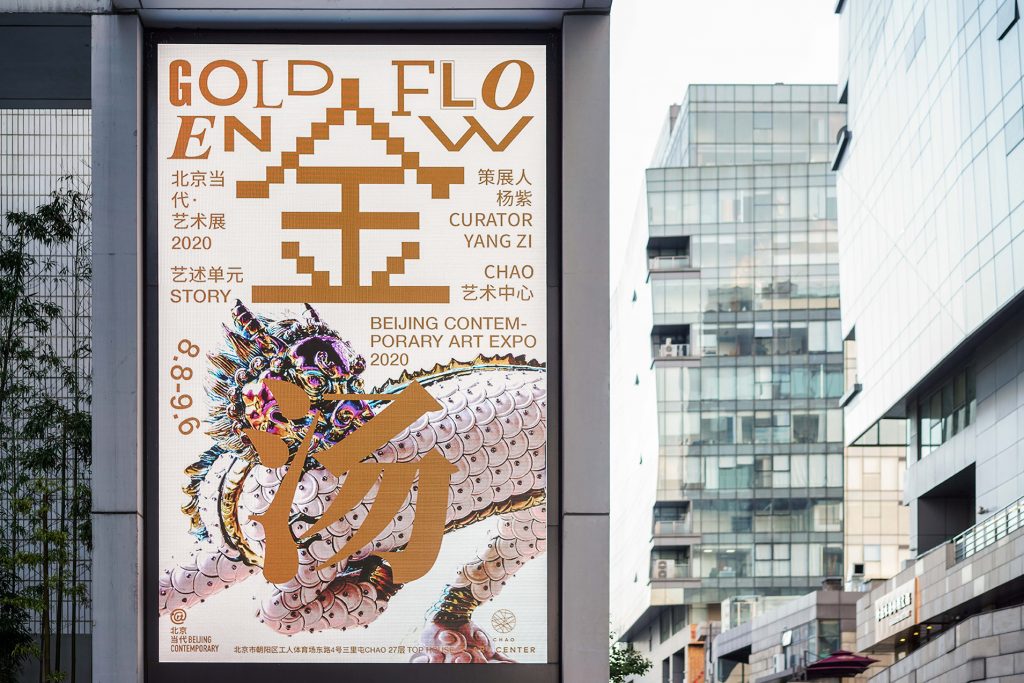
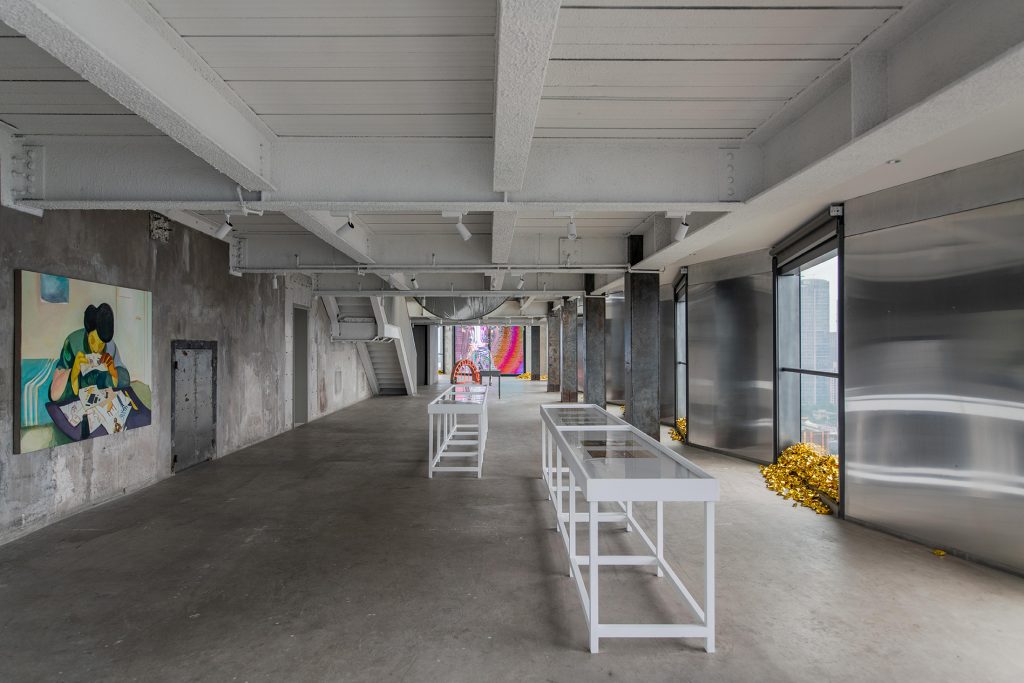
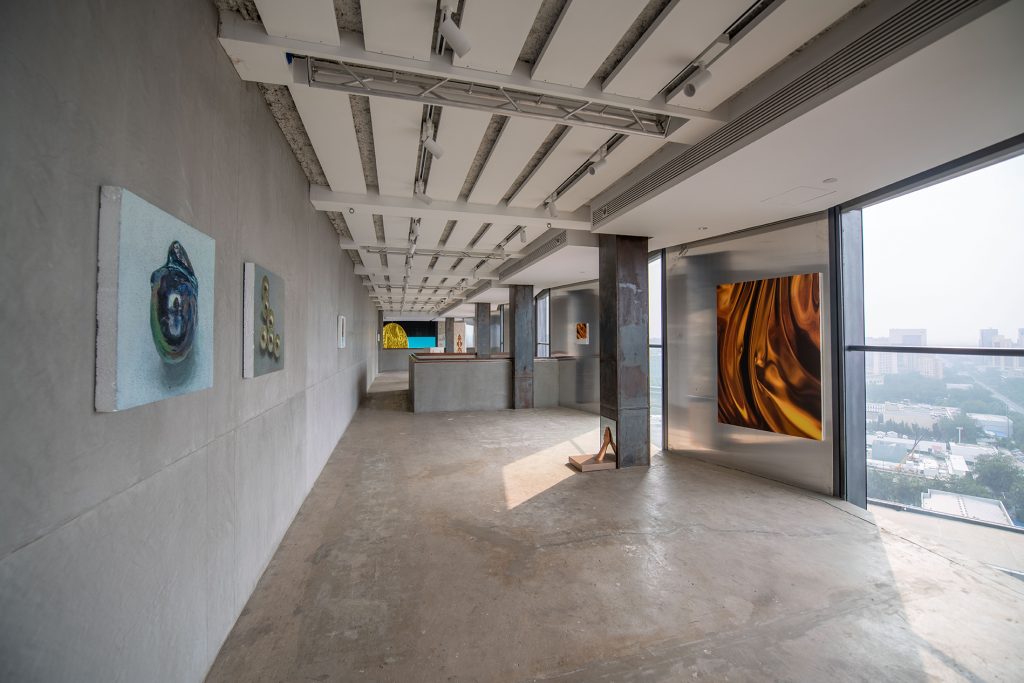
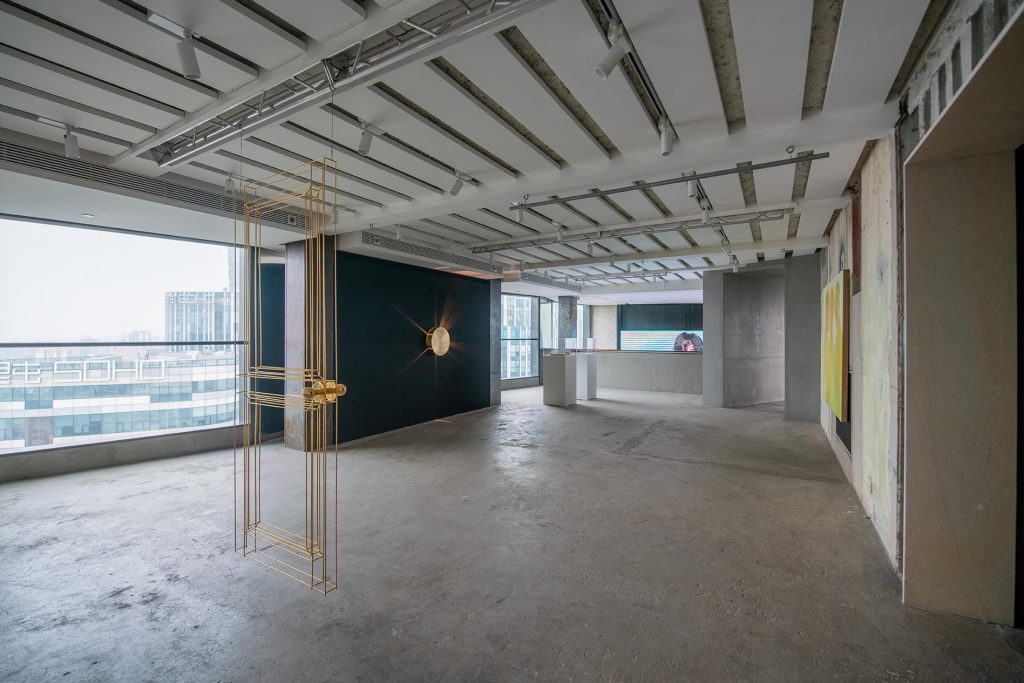
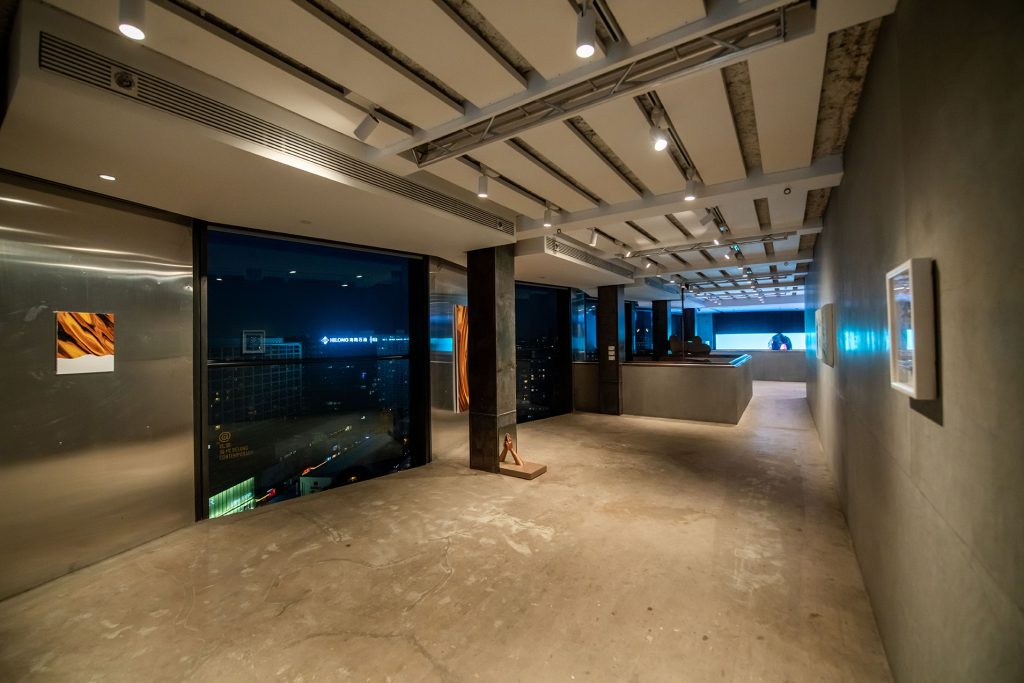


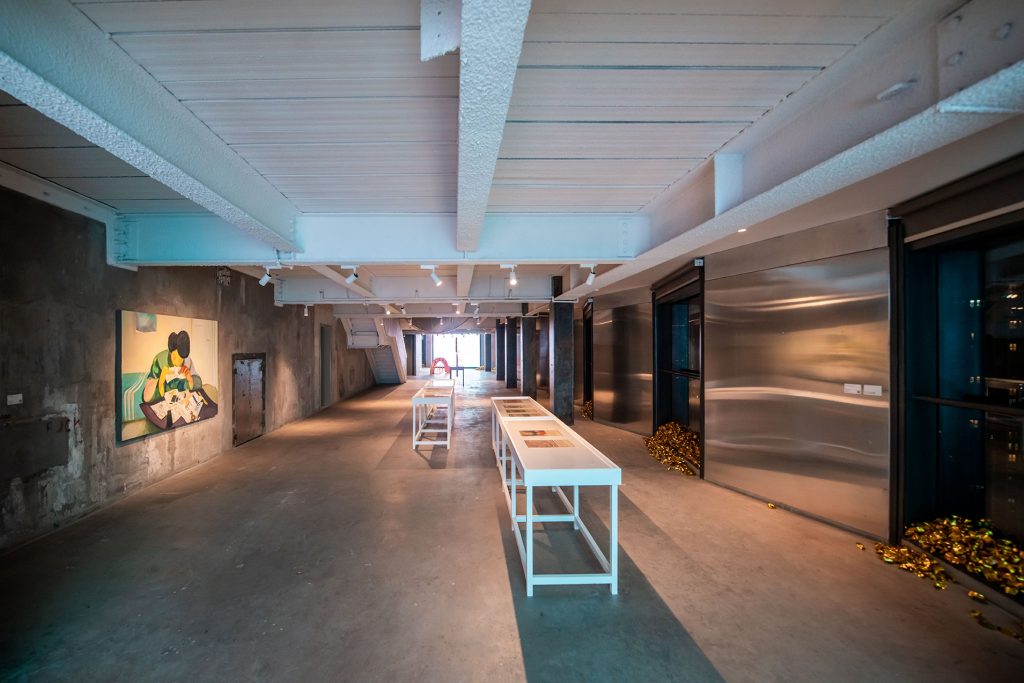

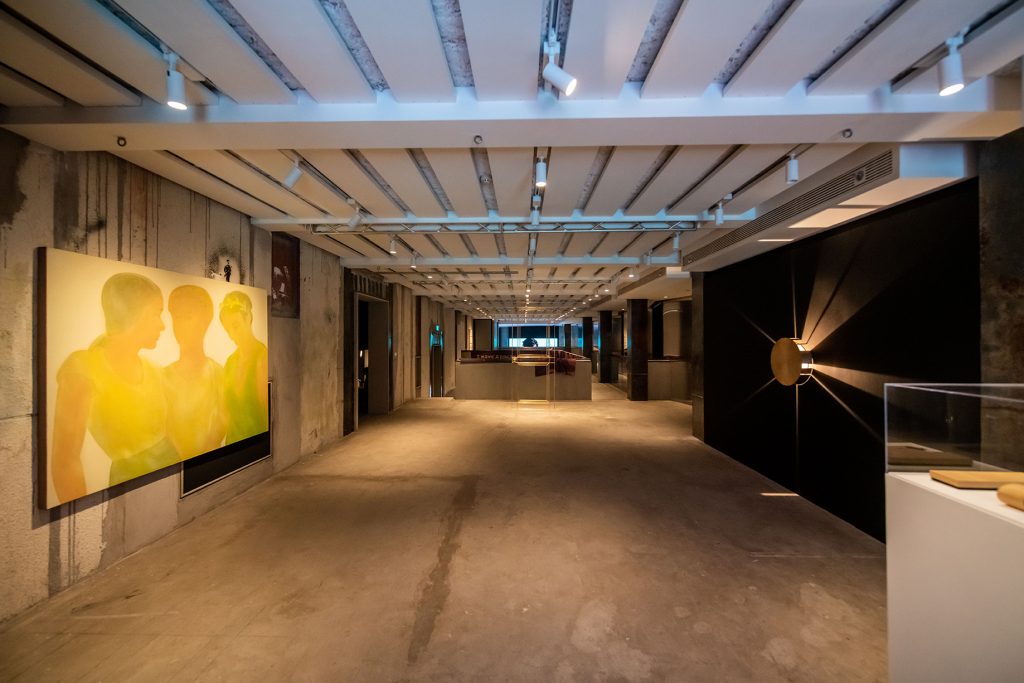

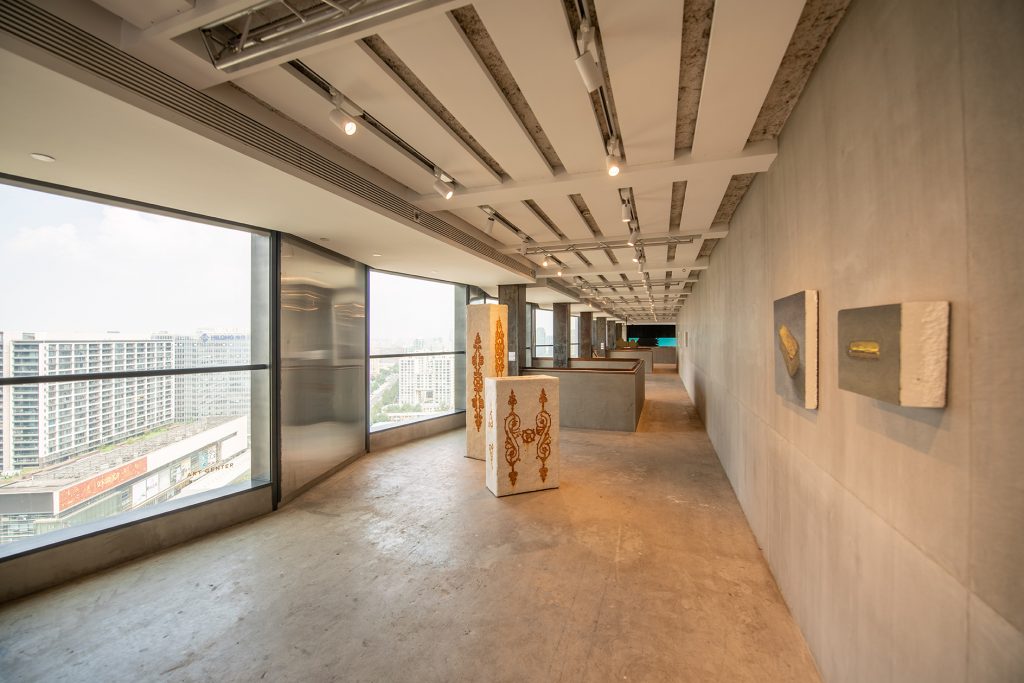
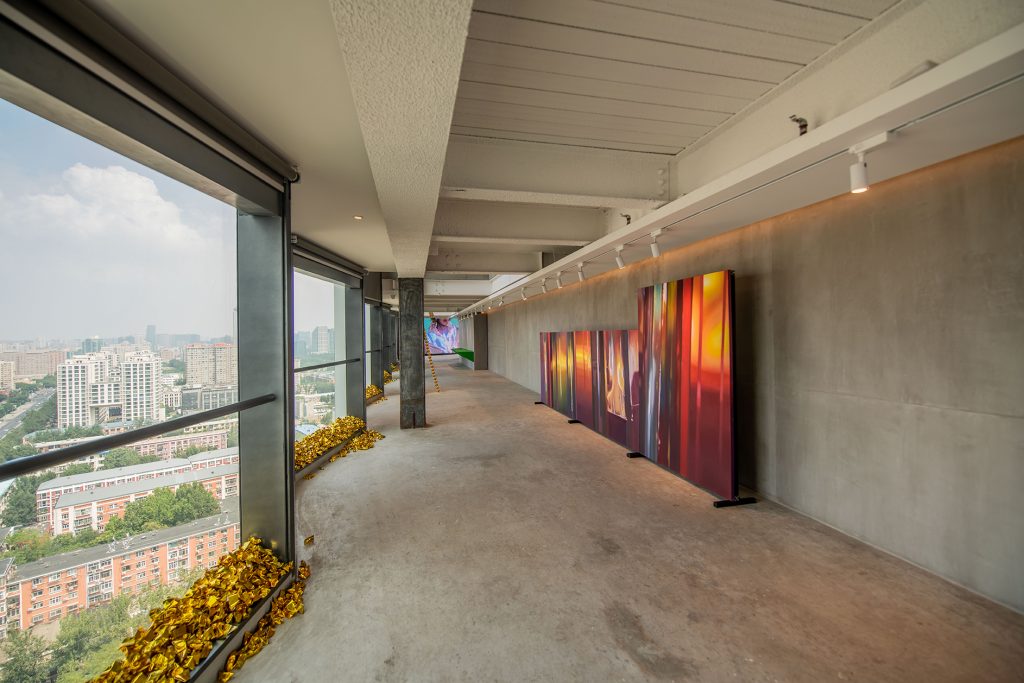

紫金
陈文波
布面油画
200×150 cm×3
2019

向晚时计
陈哲
镌刻黄铜片、卤素灯珠
46.8×46.8×10 cm
2018

领带
傅丹
丝
L 146cm、W 9cm
2010

椅子
高伟刚
不锈钢镀24K黄金
125×60×70 cm
2018

金山 No.2
胡庆雁
金纸
尺寸可变
2014

一切
黄含康
玻璃钢、玻璃、木制底座
40×35×50 cm
2019

Amber-201807 (The Graces)
姜琤
布面油画
150×200 cm
2018

碾死
珂勒惠支
铜板蚀刻版画
25×31.8 cm
1910

斯芬克斯-G
李钢
钢铁防盗窗、石膏、头发
115×70×34 cm
2016

Dream
李维伊
Steel
200×257 cm
2020

时间中
刘芳
Maxied materials
98×98×10 cm
2019

Re-en-act
刘诗园
摄影装置
240×60×40 cm×2
2012

陆扬数字转生-技术展示
陆扬
Video
2-4′
2020
》,2011,三频录像,439_压缩-5x5.jpg)
三部曲(红白黄)
马秋莎
三频录像
4’39”
2011

Orange
娜布其
Yellow brass
200×8×9 cm
2015

金缮彩衣
蒲英玮
丝绸、金色涂料
168×1700 cm
2020

蜗牛-你的嘴唇让我紧张
乔瓦尼·欧祖拉
青铜、铁
213×13.7×5.5 cm
2017

水月观音
森内敬子
帆布、丙烯、金箔、石头
22×27.5 cm
2012

空军一号 AIR FORCE ONE
孙存明
水彩纸、蜂蜜、火,铝合金装裱
147×99.6×5 cm
2020

Metal No.14
Wan Yang
Oil on canvas
150×100 cm
2018

无梦的歌
王博
LED走字屏幕、转台、不锈钢长椅、文献
尺寸可变
2019
-54循环播放-loop压缩-5x5.jpg)
金色呼吸
王海洋
,《》,,单频影像(彩色,有声) 54”循环播放 loop

六个委拉斯凯兹
王茂
苯板丙烯
60×62 cm
2020

Lepidollaria arizobilis
王墒
不锈钢、印刷材料、玻璃
168×60×210 cm
2019-2020

与神统一,并分享他的纯洁和不朽
王思顺
黄金、漆
3.526×2.179×1.347 cm
2013

leopard
Wang Xiaoqu
Oil on canvas
130×130 cm
2020

Kylin
Wu Daxin
不锈钢、陶瓷、汉白玉
正身 195×90×44 cm
2020

瞿如
伍伟
纸、木、金属、石膏、塑料
70×58×178 cm
2020

空想 3.0
颜磊
金属、电机、亚克力 185×335×220 cm

至上主义&急救毯
杨健
不锈钢管、急救毯
整体尺寸可变
2018

金·言
姚聪
艺术微喷、收藏级艺术纸
30×20 cm×8
2020
》,2018-水泥、铜、尼龙绑带、金属、木、橡胶轮-220×80×110.5-cm_压缩-5x5.jpg)
Standing(III)
Zang Kunkun
cement、copper、nylon、metal、wood、rubber wheel
220×80×110.5 cm
2018

Breakfast
Zhai Jing
Oil on canvas
135×180 cm
2020

China Petrochemical – GOLDEN4028
Zhan Rui
Acrylic on canvas
135×135 cm
2020
_压缩-5x5.jpg)
Wonders of Westland
Zhang Guangyu
Gouache and watercolor on paper
37×26 cm×9 (copy)
1945
Please scan the QR code to follow us on WeChat :BJArtRepublic
